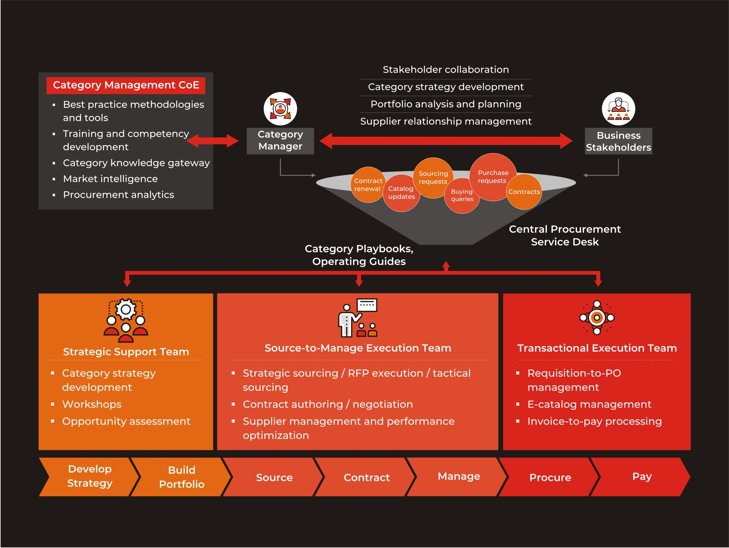4 Factors To Consider When Upgrading your Procurement OS
An upgraded operating system (OS) takes the procurement function out of the traditional back-office role, and into that of a valued strategic business partner.
 By Preechar Bowonkitwanchai /Shutterstock
By Preechar Bowonkitwanchai /Shutterstock
That little flag in the corner of your laptop screen, the red exclamation mark on your phone, the middle-of-night system message. You know what it means- it’s time to upgrade your operating system.
Yes, it’s painful to exit your programs, save your work, and sadly close all 35 of your vacation-planning web browser tabs. You sit, you wait, then you reboot and possibly even get reacquainted with your digital systems again. No one wants to do it, but in the end, we all are all thankful to those glowing, pulsing indicators for pushing us and guiding us through the process for that much-needed refresh.
Things run so smoothly now, don’t they?
What if we received the same upgrade reminders in real life? What would your red exclamation mark tell you about your procurement operating system? Is it time for an upgrade? Almost definitely! An upgraded operating system takes the procurement function out of the traditional back-office role, and into that of a valued strategic business partner.
The transformation, however, can neither happen overnight nor without setting the right goals and planning. You’ll need to close some browser windows and maybe lose a few saved files in the process. In our decade-long process of co-creating this operating model with leading global companies, we have identified four key enablers required to help you upgrade. Read on and trust me, it will all run so much more smoothly in the end.
Structure of Upgraded Procurement OS

1. Strategic Category Management
At the heart of the transformation is the shift that procurement has to make from being reactive problem solvers to proactive solution providers. This is not possible without category managers or business-aligned spend managers aligning with the business, understanding strategic priorities and building relationships with stakeholders. When category managers proactively reach out to the business, they begin to demonstrate value and finding a place at the table will become easier.
Building a centralised Center of Excellence (CoE) can help category managers develop the required skills. The CoE can provide the necessary support such as tools, methodologies, templates, market intelligence and coaching.
2. Centralised Procurement Help Desk
On any given day, procurement functions are inundated with queries and work requests. As procurement transitions to operate more strategically, it is critical to find an effective way to service internal and external stakeholders.
Setting up a centralised procurement desk can help channelise the requests to various specialist teams such as:
- Strategic support team that can be responsible for services such as market research, category strategy development, stakeholder workshops and portfolio development
- Source to manage execution team thatcan manage the execution of activities such as creation of request for proposals, supplier management and contract authoring
- Transactional execution team thatcan manage back-office operations such as purchase order management and invoice-to-pay processing
3. Technology Accelerators
The digitisation of transactional and repetitive procurement activities is a low-hanging fruit for organizations as it will release the bandwidth of resources for more proactive, strategic planning. Further, digitisation can help identify patterns, norms and trends leading to a procurement playbook.
Supply chain management is experiencing a quantum shift because of emerging technologies such as internet of things, artificial intelligence and advanced analytics. Adoption of these technologies, is critical to upgrading procurement’s operating model, but it should be planned well. It is necessary to define the overarching vision and strategy, and to then evaluate how technology fits into the roadmap.
4. Implementation Approach
The final piece of the puzzle is the actual re-organization of the procurement function into the new operating model. It is a myth that technology by itself will be enough to integrate all processes. Putting together the right team, getting executive sponsorship, ensuring alignment with the vision and finding collaborative external partners are all critical success factors in upgrading to the optimal OS for your organisation.
This is where the smart phone operating system analogy falls a bit short- unfortunately, we, as the procurement team, can’t expect to wake up to a fully-restored bug-free system- good results take time. It is necessary to plan for adequate time required for the new model to mature and assimilate into the organisation’s new way of working. If this is done correctly, your stakeholders will certainly experience the thrill of a significantly improved experience.
Now is the time to upgrade your framework and develop the future infrastructure for procurement operations.
Are you ready to push the upgrade button? Learn more by reading WNS’ Next Generation Procurement Model Whitepaper.
WNS are sponsoring Big Ideas Summit London on March 14th. Sign up now as a digital delegate to follow the day’s action wherever you are in the world.